From ancient foes to unexpected allies, explore how 'barbarians' in the Bible redefine our understanding of civilization and unity.
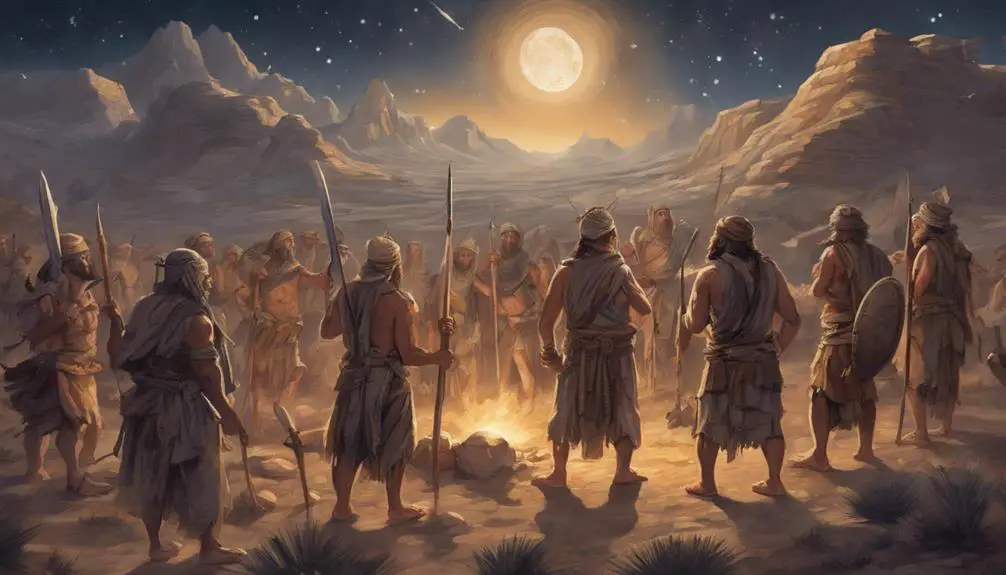
Barbarians in the Bible
Have you ever considered the echoes of 'barbarians' throughout the sacred texts, where their tales are not just whispers but roars that have shaped centuries?
You're about to uncover how the Bible defines 'barbarians,' not just in terms of uncivilized outsiders but as pivotal players in its sprawling narrative.
From historical contexts to the resolution of conflicts, these stories weave a complex tapestry of unity and understanding that still resonates.
As you venture further, you'll find that the lessons gleaned from these biblical barbarians might just challenge your preconceptions and illuminate the pathways to bridging divides in our contemporary world.
Key Takeaways
- The term 'barbarian' in biblical contexts often signifies outsiders deemed culturally or linguistically different.
- Biblical narratives use 'barbarians' to explore themes of identity, conflict, and the boundaries between civilizations.
- Encounters with 'barbarians' in the Bible highlight the importance of understanding and empathy across cultural divides.
- Divine interventions in stories with 'barbarians' serve as mechanisms for overcoming conflict and fostering unity.
Defining 'Barbarians' Biblically
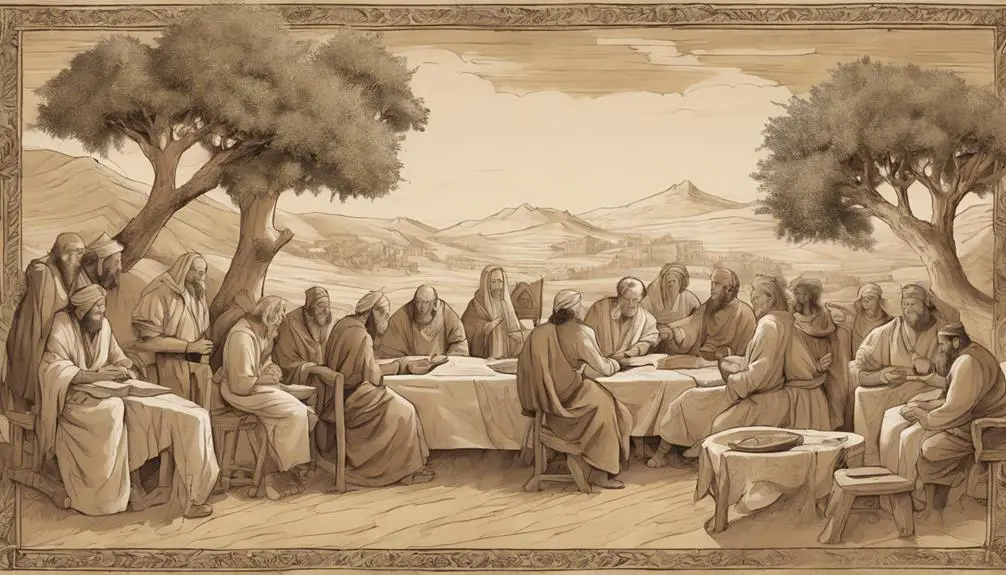
In biblical contexts, the term 'barbarians' refers to foreign peoples perceived as uncivilized or culturally different from the Hebrews and early Christians, illustrating a distinction rooted not in ethnicity but in cultural and linguistic differences. This classification, driven by language distinctions, underscores how communication barriers often led to broader assumptions about civilization and morality. The inability to understand a foreign tongue wasn't merely a practical hurdle but became a marker of otherness, relegating those outside the linguistic circle to the realm of the 'barbaric.'
Cultural perceptions further compounded these divisions. Practices, customs, and traditions unfamiliar to the Hebrews and early Christians were frequently interpreted through a lens of superiority, casting the foreign as inferior or morally dubious. This binary opposition, with the 'civilized' on one side and the 'barbarians' on the other, was less about an intrinsic difference in human value and more about the unfamiliarity and perceived threat that cultural differences posed.
Analyzing these biblical references through a scholarly lens reveals a complex interplay of language, culture, and identity. It highlights how ancient texts mirrored broader human tendencies to categorize and judge the unfamiliar, tendencies that continue to shape cultural perceptions to this day.
Historical Contexts and Encounters
Understanding the biblical portrayal of 'barbarians' requires examining the specific historical contexts and encounters that shaped these perceptions. Through the lens of cultural perceptions, you can grasp how ancient societies viewed those outside their cultural and religious circles. These outsiders, often labeled as 'barbarians', weren't only seen through the narratives recorded in biblical texts but also through archaeological evidence that sheds light on their interactions with the Israelites and early Christians.
The term 'barbarian' itself was colored by the cultural perceptions of the time, often reflecting a sense of 'otherness' that distinguished between civilized and uncivilized groups. Archaeological evidence provides a tangible link to these historical encounters, offering insights into the daily lives, trade, and conflicts between these groups. This evidence helps to contextualize the biblical narratives, revealing the complexities of these interactions beyond the written word.
Analyzing these historical contexts and encounters allows for a more nuanced understanding of the term 'barbarian' within the biblical texts. It's not just about the label but about understanding the cultural and historical underpinnings that informed these perceptions. Such an analysis highlights the importance of considering both the biblical narratives and the archaeological evidence to gain a fuller picture of these ancient societies and their interactions.
Notable Biblical Barbarians
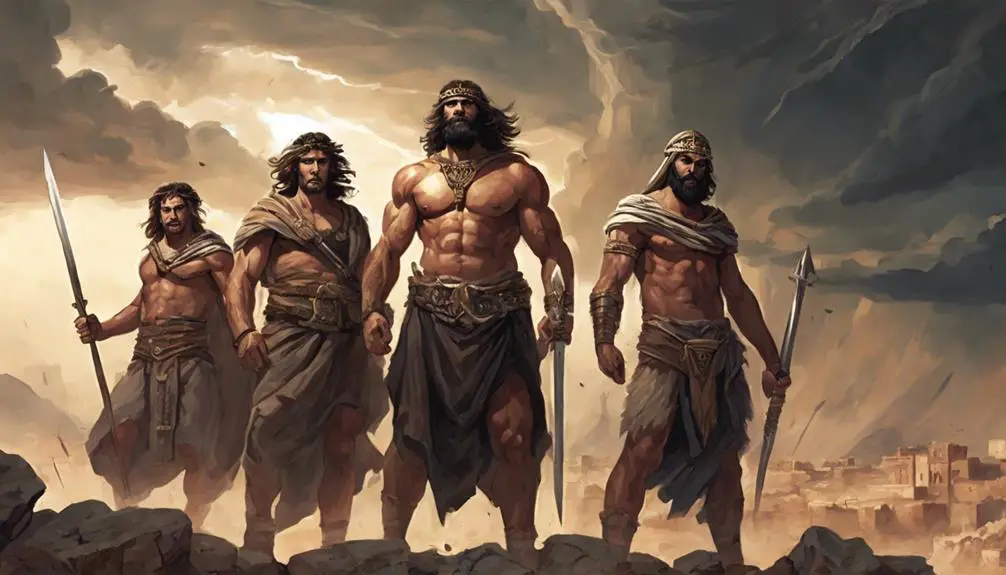
Who were the notable figures labeled as 'barbarians' in the Bible, and how do their stories contribute to our understanding of ancient perceptions of otherness? One prominent example is Goliath, whose towering stature symbolized not only physical might but also the alien and menacing nature of the Philistines to the Israelites. Goliath's description serves as a physical manifestation of the 'barbarian'—an outsider who poses a significant threat to the established order and values of the Israelite society.
Similarly, Samson's extraordinary strength, though he himself was an Israelite, positioned him at the margins of his own society due to his Nazirite vow and actions that often went against societal norms. His interactions with the Philistines, especially, highlight a complex dynamic where 'barbarian' traits of strength and defiance blur the lines between friend and foe.
These narratives, by emphasizing Goliath's stature and Samson's strength, underline a broader biblical theme: physical prowess as both a marker of the barbarian other and a point of fascination and fear. Through these characters, the Bible explores themes of identity, alterity, and the nuanced boundaries between civilization and barbarism.
Themes of Conflict and Resolution
Exploring the biblical narratives further, it becomes evident how conflict and resolution play pivotal roles in delineating moral and societal codes. These stories often underscore the clash between differing cultural interpretations, highlighting how such disputes shape the ethical landscapes of their times. You'll notice that divine interventions frequently serve as mechanisms for resolution, presenting a unique interplay between human actions and supernatural guidance.
Analyzing these accounts, it's clear that the Bible doesn't shy away from depicting the complexities of human interactions, especially when cultural differences are at the forefront. Conflicts, whether they stem from misunderstandings, prejudices, or outright aggression, are portrayed with a depth that invites reflection on the part of the reader. Yet, the resolutions offered—often through divine means—suggest an overarching belief in the possibility of overcoming such divisions.
These narratives encourage a thoughtful examination of how conflicts arise and are resolved, both in the ancient context and in contemporary applications. By focusing on cultural interpretations and divine interventions, the Bible offers insights into the enduring nature of conflict and the potential paths towards reconciliation, avoiding a simplistic portrayal of 'us versus them' and instead fostering a more nuanced understanding of human diversity and the divine's role in bridging divides.
Lessons in Unity and Understanding
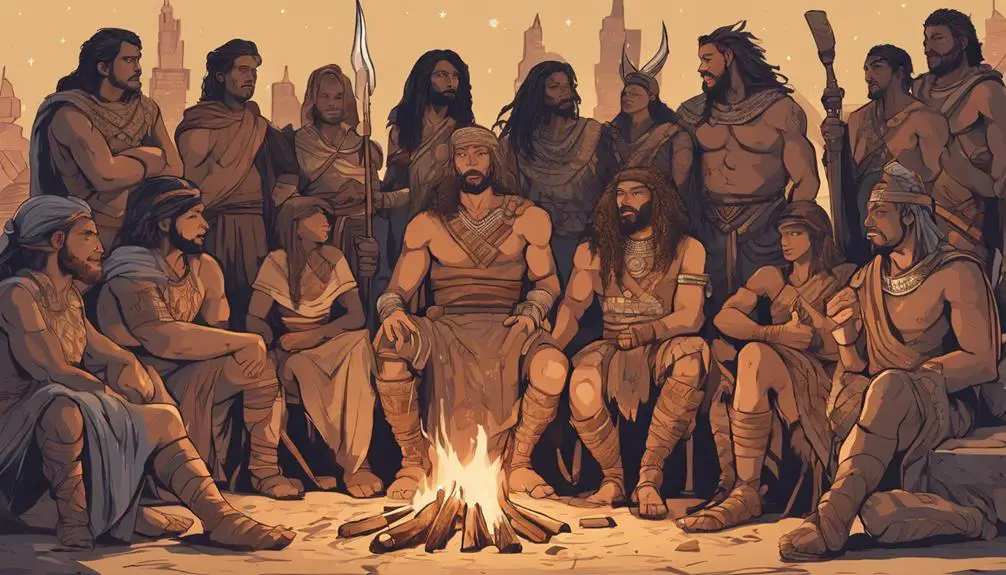
How do biblical narratives convey lessons in unity and understanding amidst the backdrop of cultural and moral conflicts? These stories, rich in historical and spiritual context, often highlight the importance of cultural empathy, an essential component for overcoming prejudice and fostering harmonious relationships. By examining the interactions between diverse groups, one can discern a clear biblical mandate for empathy, respect, and the pursuit of common ground, even in the face of deep-seated differences.
The biblical approach to resolving conflicts and bridging divides emphasizes the need for open dialogue and mutual respect. This perspective not only encourages the acknowledgement of shared humanity but also the recognition of the value in differing viewpoints. Such narratives offer a profound lesson for today's world, where cultural and moral conflicts frequently arise. The emphasis on understanding and unity serves as a timeless reminder of the power of empathy in overcoming barriers.
Modern parallels can be drawn from these ancient texts, suggesting that the challenges of cultural division aren't unique to any one era. By applying the principles of cultural empathy and unity depicted in biblical stories, contemporary society can navigate its own conflicts with greater wisdom and compassion, fostering a more inclusive and understanding world.
Frequently Asked Questions
How Has the Modern Interpretation of the Term 'Barbarian' Diverged From Its Biblical Meaning, and How Does This Affect Our Understanding of Historical Texts?
You've noticed that the modern interpretation of 'barbarian' has shifted significantly from its original meaning due to language evolution and cultural stereotyping.
This divergence affects how you understand historical texts, as the term once referred more to foreignness than savagery. Recognizing this shift is crucial for a scholarly, analytical approach, helping you avoid projecting contemporary biases onto ancient contexts, and ensuring a more objective understanding of historical narratives and their characters.
In What Ways Have Contemporary Cultures or Religious Groups Reclaimed or Reinterpreted the Identity of Biblical Barbarians for Their Own Narratives or Ideologies?
You're navigating a sea of shifting meanings, where cultural appropriation and identity politics transform ancient labels into modern badges of pride or defiance. Contemporary groups often reinterpret 'barbarian' identities to challenge or enrich their narratives, weaving these threads into the fabric of their cultural or religious ideologies.
This reimagining serves as a mirror, reflecting how societies choose to understand their past and define their collective identity in the present.
Are There Specific Archaeological Findings That Have Challenged or Confirmed the Biblical Accounts of Barbarians, and What Impact Do These Have on Our Historical Understanding?
Yes, archaeological findings have indeed challenged or confirmed accounts of barbarian migrations and their cultural assimilation. These discoveries shed light on ancient societies' interactions, influencing our historical understanding significantly.
By examining artifacts, settlement patterns, and genetic evidence, researchers can trace the movements and integration of these groups, offering insights into their lifestyles and contributions to the development of civilizations.
This analytical approach deepens our grasp of the past, enhancing scholarly narratives.
How Do Depictions of Barbarians in the Bible Compare With Those in Other Ancient Texts or Traditions From Neighboring Cultures?
When you compare depictions of barbarians across ancient texts, you'll find intriguing differences and similarities. These cultural perceptions vary widely, reflecting each society's views and experiences.
Ancient comparisons between the Bible and neighboring cultures' literature offer a rich tapestry of how 'the other' was perceived and categorized. This analysis doesn't just broaden your historical understanding; it also sheds light on the complex interplay of identity, otherness, and cultural narratives in ancient times.
How Has the Portrayal of Barbarians in the Bible Influenced Modern Literary or Cinematic Representations of Similar Figures or Themes?
Like a river shaping the landscape, the portrayal of barbarians in literature and film has been deeply influenced by historical sources. Barbarian archetypes in modern media, from movies to novels, often draw from ancient narratives, including biblical ones.
These figures aren't just relics but have evolved into complex cinematic tropes, reflecting a blend of savagery and nobility. Analyzing these representations reveals how ancient perceptions continue to mold contemporary storytelling, enriching our understanding of cultural continuity.
Conclusion
In the tapestry of biblical narratives, 'barbarians' aren't merely threads of discord but also symbols of a larger human fabric bound by the need for understanding and unity. Your exploration reveals that these figures, often seen through a lens of conflict, ultimately weave into the story a rich pattern of reconciliation and collective growth.
They remind you that the journey from misunderstanding to harmony is a pivotal, universal theme, illustrating that in the divine loom, every thread has its place and purpose.

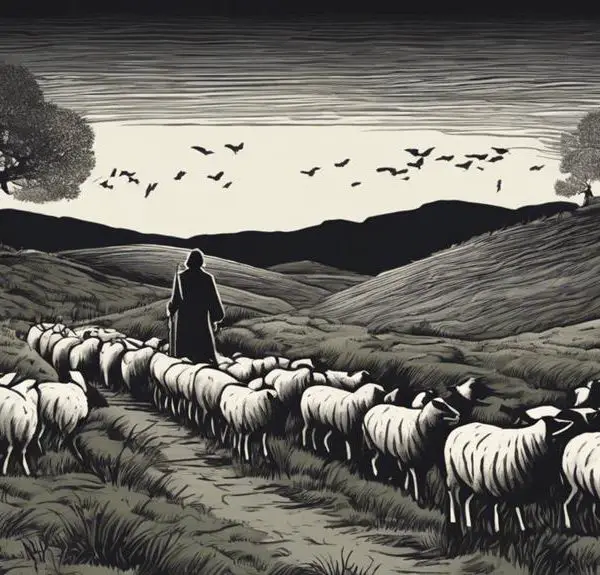

Sign up